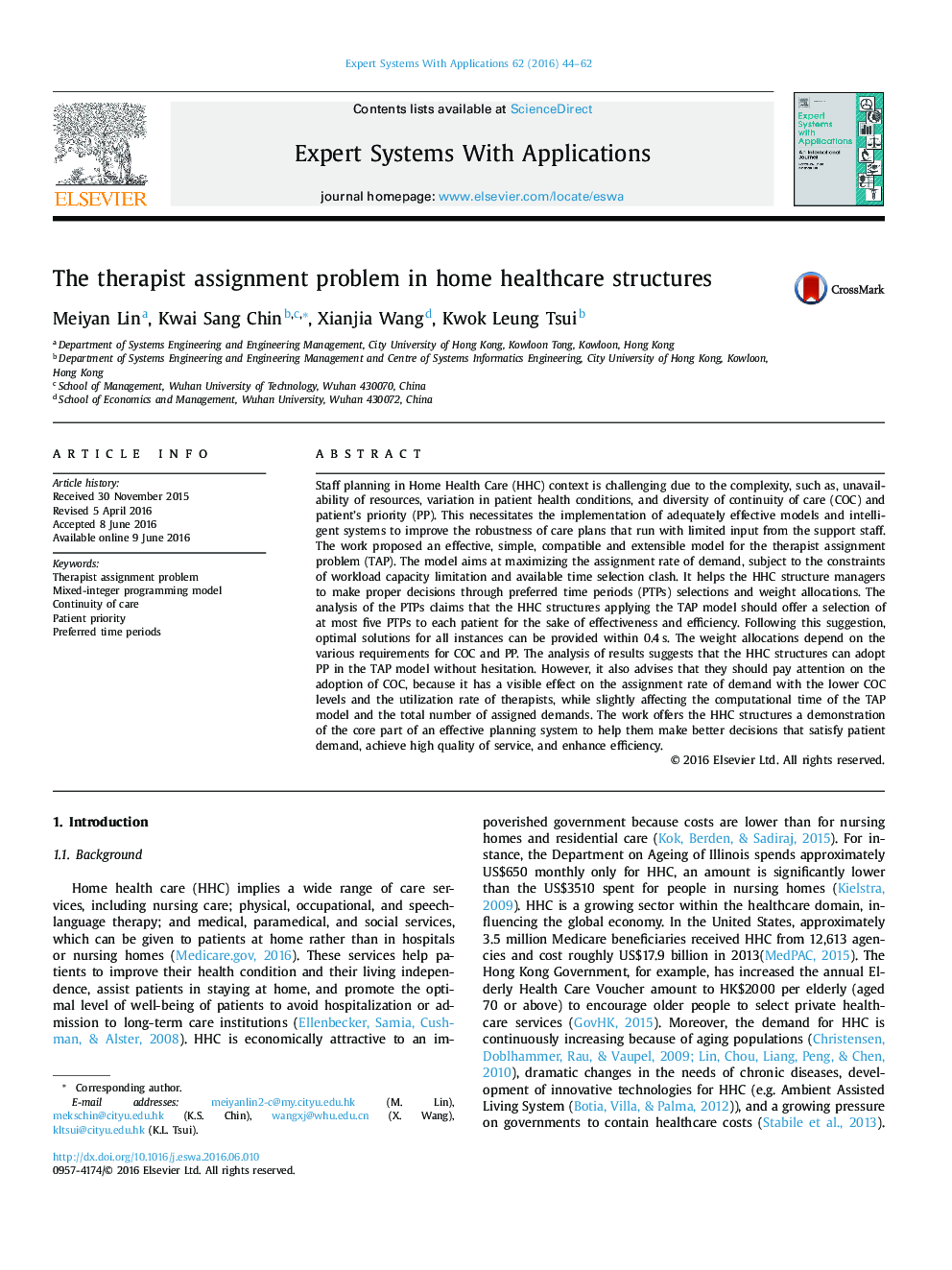| Article ID | Journal | Published Year | Pages | File Type |
|---|---|---|---|---|
| 383540 | Expert Systems with Applications | 2016 | 19 Pages |
•A proposed mixed-integer program model for the therapist assignment problem.•Effect study of the number of available time periods (ATPs) on efficiency of model.•Effect study of continuity of care (COC) and patient priority (PP) on performance.•A selection of at most five ATPs to each patient is optimal choice for performance.•PP and COC have significant effects on the satisfaction and reassignment rate.
Staff planning in Home Health Care (HHC) context is challenging due to the complexity, such as, unavailability of resources, variation in patient health conditions, and diversity of continuity of care (COC) and patient's priority (PP). This necessitates the implementation of adequately effective models and intelligent systems to improve the robustness of care plans that run with limited input from the support staff. The work proposed an effective, simple, compatible and extensible model for the therapist assignment problem (TAP). The model aims at maximizing the assignment rate of demand, subject to the constraints of workload capacity limitation and available time selection clash. It helps the HHC structure managers to make proper decisions through preferred time periods (PTPs) selections and weight allocations. The analysis of the PTPs claims that the HHC structures applying the TAP model should offer a selection of at most five PTPs to each patient for the sake of effectiveness and efficiency. Following this suggestion, optimal solutions for all instances can be provided within 0.4 s. The weight allocations depend on the various requirements for COC and PP. The analysis of results suggests that the HHC structures can adopt PP in the TAP model without hesitation. However, it also advises that they should pay attention on the adoption of COC, because it has a visible effect on the assignment rate of demand with the lower COC levels and the utilization rate of therapists, while slightly affecting the computational time of the TAP model and the total number of assigned demands. The work offers the HHC structures a demonstration of the core part of an effective planning system to help them make better decisions that satisfy patient demand, achieve high quality of service, and enhance efficiency.
